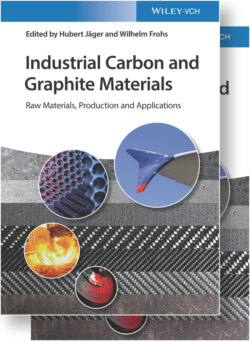Читать книгу Industrial Carbon and Graphite Materials - Группа авторов - Страница 33
3.6 History of Activated Carbon
ОглавлениеPorous charcoals from wood and other biomaterials (plants, blood, bones) have been used since ancient times as medicine against stomach and intestinal troubles [10]. In the nineteenth century, an additional usage became decolorizing charcoals for crude sugar solutions. The first industrially activated carbons were Eponit decolorizing carbons, produced since 1909 by the “Chemische Werke Ratibor” according to patents of R. von Ostrejko by heating wood charcoal with steam and carbon dioxide in a special furnace [11]. In 1911, the Dutch company Norit N.V. started commercial activation of peat by using steam. In addition to this gas activation, “chemical activation” of charcoals from several carbon‐containing raw materials such as sawdust, coconut shells, peat, lignite, and bituminous coal by zinc chloride solution or acids are applied in European countries and the United States since the twentieth century to produce adsorbing carbons for gas masks, gas and water purification, solvent recovery, and many other purposes (e.g. molecular sieving of gas mixtures). The production rate grew to more than 1 × 106 t per year.
